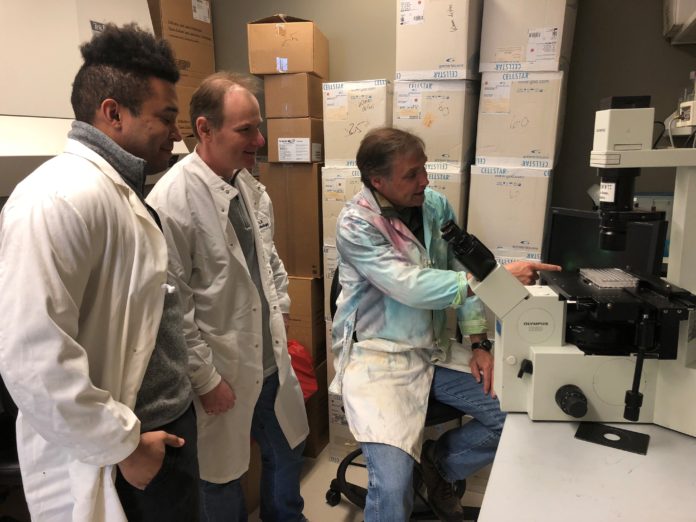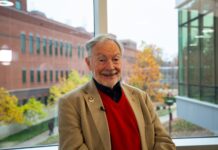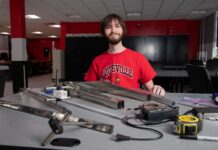
Researchers at the University of Louisville have developed a technology that may inhibit a critical pathway for cancer.
The UofL technology works by targeting the RAS protein. When mutated, RAS turns into a stuck accelerator pedal, says Dr. Geoffrey J. Clark, a co-inventor of the technology.
“Normally, it gets pressed when you need to grow and then the foot comes off and the cell slows down,” said Clark, an associate professor of pharmacology and toxicology at UofL. “When it becomes mutated, the accelerator’s jammed on.”
Cells suddenly start growing very fast and don’t stop growing when they’re supposed to. They become aggressive, he said, and penetrate other tissue, just like a tumor cell.
“The argument’s always been that if we could stop this RAS protein from working, we could shut down probably at least a third of human tumors,” he said.
But that’s easier said than done. There were a lot of potential compounds to test, and no attempt before had been successful.
So, Clark enlisted fellow professor and researcher Dr. John Trent, who runs the Molecular Modeling Facility at UofL. Trent used the school’s partnership with DataSeam, a non-profit with a network of school computers across the state.
When the computers aren’t being used, they’re connected to act as a distributed supercomputer, allowing researchers to process and analyze huge amounts of data — for example, running through millions of possible drugs to combat RAS in a matter of days.
The result was a drug that could inhibit the deregulated RAS protein.
“The patient impact could be extremely broad, because RAS is involved in a lot of different cancers,” said Trent, also a co-inventor. “It’s one of the holy grails that has just been unsuccessfully targeted until now.”
The drug targets only the active RAS protein, and so has little toxic effect on healthy cells. Current non-targeted treatments, such as chemotherapy, can hurt both healthy and cancerous cells, leading to painful side effects.
The drug was tested and optimized at the Brown Cancer Center’s Medicinal Chemistry Facility, which works with researchers to improve the drugs and eliminate any potential problems.
“Our goal is to take these initial discoveries and elaborate on them, and potentially get them into the clinic,” said Dr. Joe Burlison, the facility’s director.
Getting the drug to the clinic is crucial, they said, because that’s where it can benefit patients.
To reach that goal, the team has been working with resources around campus and within the Office of the Executive Vice President for Research and Innovation.
The team received funding through ExCITE and other grant programs to further development, and is now working with the Office of Technology Transfer to protect the technology and find a commercial partner.





























